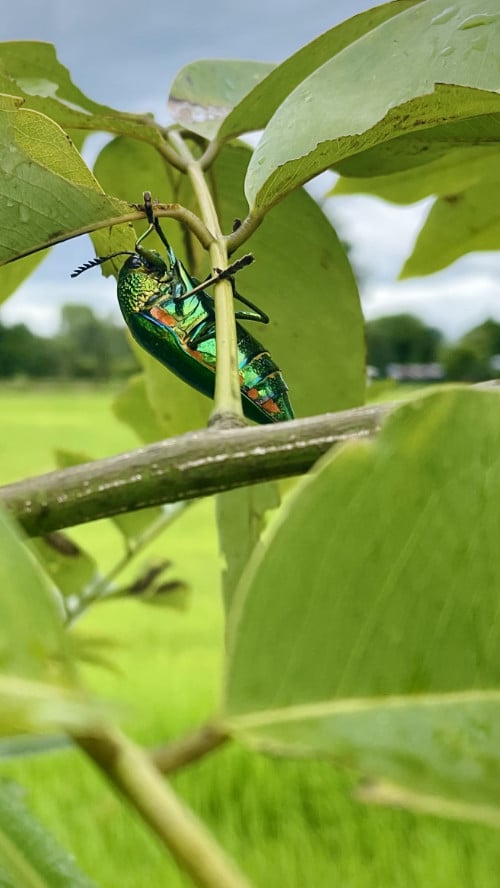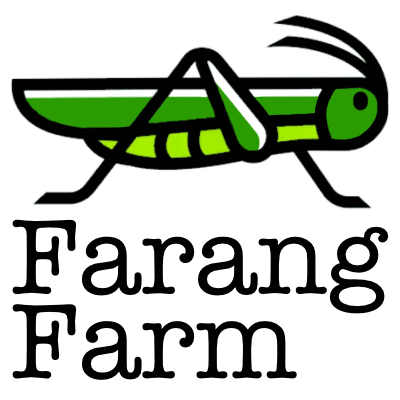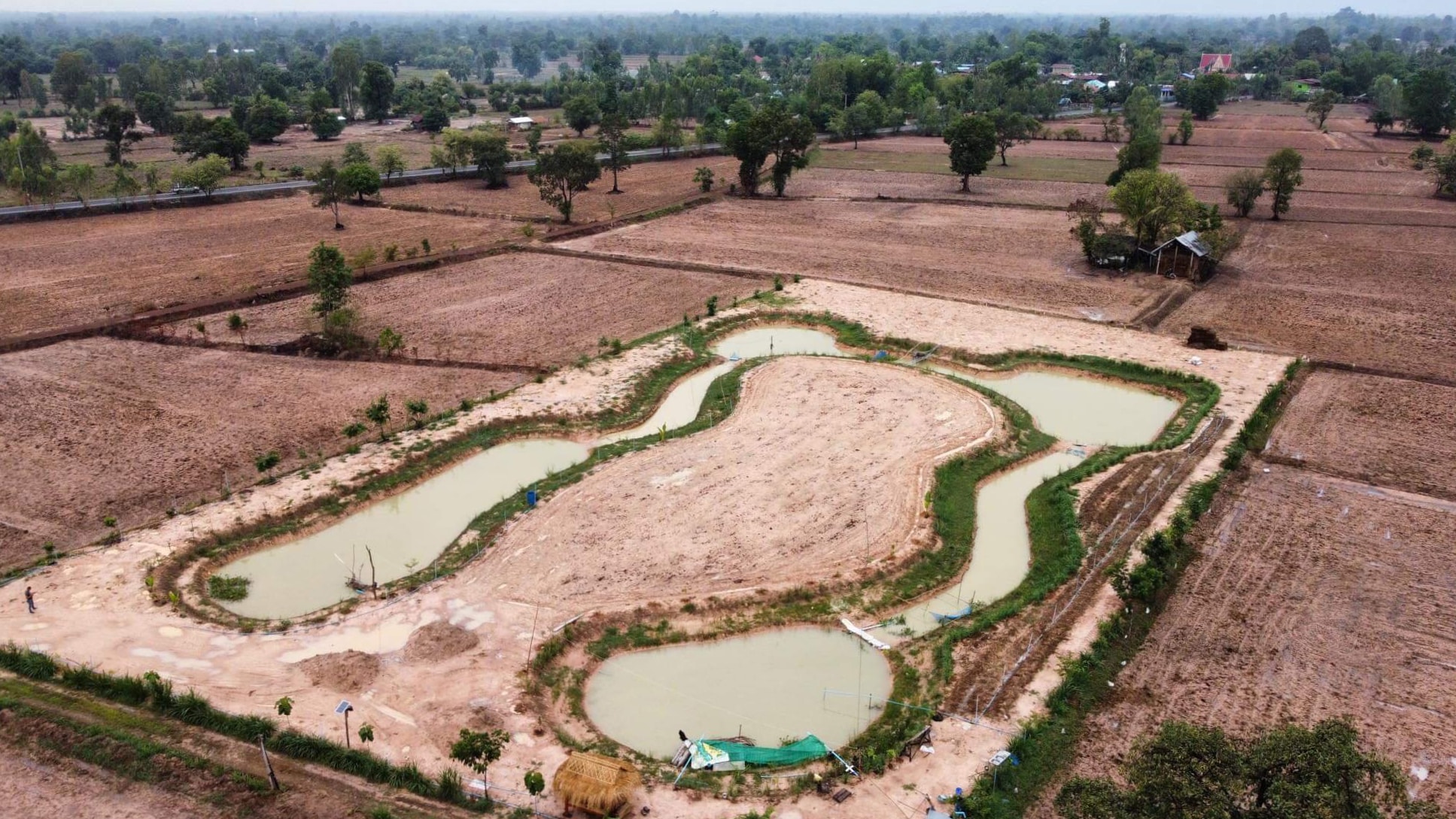The first encounter
The first time I ever saw a Jewel Beetle (Sternocera aequisignata), or was even aware of they existed, was whilst giving a tour to a friend. The beetle’s metallic emerald iridescence was incredible to see, but what surprised me most was the Thai people I was with. They were more excited than me and they grew up here.
They informed me that the jewel beetle’s numbers have dropped dramatically. Several comments in the video also mentioned how difficult they are to find now. I was sad to hear about their dwindling numbers, yet extremely happy to see this pair had found a new home. I spent a good 20 minutes taking photos and videos whilst our friend continued the tour.
How is that a business plan?
Well, its not. You can probably tell from the Phil Collins soundtrack and stupid filters, that I don’t always think things through. But how can you have a plan for something you didn’t even know existed?
One of the goals from the start was to increase biodiversity. This entire farm used to be a rice paddy after all. Seeing the excitement from two people that grew up here reinforced my belief that we were on the right path.
So before I tell you about my (vague) plan, I want to tell you what I’ve learnt about the Jewel Beetle.

What is this bug?
‘WhatIsThisBug?‘ is the name of a great subreddit, and where I got an answer to this question in minutes. Although the Sternocera Aequisignata is very similar in appearance to Sternocera Ruficornis, it is distinguishable by having green legs instead of red. It is one of 15,500 jewel beetle species in the Buprestidae family.
If I genuinely did have a business plan to do with jewel beetles, it would likely involve using them for food or jewllery. These are two of the main factors in their decline.
Beetlewing Art
Beetlewing is an ancient art using the irridescent wings of wood boring beetles for jewellry or to decorate clothing. The magnificent colours are created by ‘structural coloration’, where microscopic textures in their shell selectively reflect specific frequencies of light in different directions. Its the same phenomenon as a peacock’s feathers and a compact disc.
A jewel beetle’s wings are also incredibly durable. There are historical pieces on display in Bangkok that still maintain their shine.
Although this has contributed to their demise, it is possible to continue the tradition in a sustainable way. A jewel beetle’s adult life is short at only 3-4 weeks. There are efforts to prevent the tradition from dying out, but by only collecting jewel beetles that die of natural causes.
Theres always a way to find a balance.
The Jewel Beetle’s life cycle
The female jewel beetle will lay her eggs one by one at the base of a host tree or plant. They can lay up to a dozen eggs in total which take 2 months to hatch. In this case, it looks like they chose Golden Shower trees (don’t laugh, its not funny. Neither is the vegetable called ‘Morning Glory’). We have two Golden Shower trees quite close to each other. We found one beetle in each tree.
The developmental stages of insects are called ‘instars‘. The hatched larva of a jewel beetle has five stages. During stages 1 to 4 they stay in the soil. They will feed on the roots of the tree for 12-16 weeks. The 5th instar is their final form and when we can find them in the tree. ALthough this adult stage is fairly brief, the complete life cycle takes up to 2 years.
Staying on track
The only reason I know anything about these little fellas, is by experiencing them first hand. They peaked my curisoity and I needed to find out more.
My long term plan for the farm always revolved around bio-diversity, self sufficiency, community and sustainability. But we still don’t know what the final product will be. Ideas have included a homestay, a base for Isaan tours, a zero waste restaurant, a school and several others. We haven’t rushed it because we wanted to see how things grow organically (literally and figuratively).
For now, all I need to know is we are moving in the right direction. Meeting these two jewel beetles for the first time confirms to me that we are on the right track.


